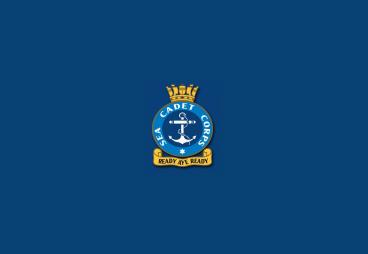TS - PowerPoint PPT Presentation
1 / 17
Title:
TS
Description:
This design meant they could be turned up for swabbing the decks and ... Originally used for preventing the tar, from the sailor's pigtail, soiling the jumper. ... – PowerPoint PPT presentation
Number of Views:22
Avg rating:3.0/5.0
Title: TS
1
(No Transcript)
2
TS
3
SEA CADET UNIFORM AND ITS HISTORY
4
No 1 Uniform Trousers (Best Uniform)
History Known as Bell Bottoms. This design
meant they could be turned up for swabbing the
decks and slipped off easily over their boots if
fell overboard. Originally, pressed in a
concertina style with 5 or 7 creases
horizontally. Replaced in 1977 by flared trousers.
Care Should be dry cleaned only (as a suit),
with fore and aft creases. When pressing always
use a damp cloth or brown paper between the iron
and the trousers, to prevent shine.
5
White Front (Best Uniform)
History Sea Captains personal boat crews only,
wore a distinctive uniform vest, so they could be
recognised. They were replaced with a vest made
of flannel (which was replaced with cotton in
1938) for all sailors to wear.
Care Washed regularly on a hot temperature to
keep it white. Should be pressed with an outward
vertical crease in the front centre of the white
front, using starch to give it a crisp finish,
avoiding the blue trim.
6
No 1 Uniform Jumper (Best Uniform)
History Originally a frock was worn tucked
inside the trousers. 1914 The jumper (No 1
jacket) was re-designed, with no outside pockets
that could be caught in the rigging. Some years
later a zip was added.
Care Should be dry cleaned only (as a suit).
Sleeves should have fore and aft creases in line
with the back seam and the thumb. When pressing
always use a damp cloth or brown paper between
the iron and the jacket, to prevent shine.
7
Blue Jean Collar (Best Uniform)
History Originally used for preventing the tar,
from the sailors pigtail, soiling the jumper.
The sailors personalised their collars with
decoration. Three white stripes became standard
design when the official uniform was introduced.
Care Washed regularly and pressed with three
vertical creases. The centre crease should be
inverted and the two other creases outwards to
give an effect of two mountains and a valley.
8
Lanyard (Best Uniform)
History The lanyard served, and still serves, a
very useful purpose for securing the Seamans
knife. In 1977, the lanyard was also abolished,
but pressure from the Sailors themselves resulted
in its re-introduction.
Care Gently washed in hand-hot water, with a
mild detergent rubbing the rope in between your
hands. Hang it to dry, to ensure all round air
flow.
9
Tapes (Best Uniform)
History Sailors used to wear a sweat rag
around their forehead, to prevent sweat running
into their eyes, blinding them. When not in use,
they wore it round their neck. In 1977 a new
style silk was introduced that did not need tape
but sailors felt their uniform was unfinished
that the black woven tapes were re-introduced.
Care Gently washed in hand-hot water and laid
flat to dry. The ends are to be cut in the shape
of a Swallowtail.
10
SEAMANS CAP
History Initially designed in the
1920s. Originally black all over. Cap Tallies
started to be worn in the 19th century where
sailors painted their ships names on their straw
hats.
Care The white plastic top should be gently
scrubbed with a nail brush using a mild detergent
(not bleach), taking care not to brush the black
cap tally or rim.
11
BOOTS SHOES
Boots or shoes may be worn with No1s or No 4
Uniform
Black service shoes should be bulled to a mirror
shine all over, again using black kiwi polish or
parade gloss using a soft cloth or cotton wool
and water. Black boots should be polished,
including the welt. Only the toecap and heel
need be bulled to a mirror shine. Either
footwear must be laced horizontally not
criss-cross.
12
- Number 1 uniform for cadets consists of
- Black boots or shoes
- Black socks
- Black flared trousers
- White front
- Black jumper
- Blue collar
- White lanyard
- Black tapes or silk system
- White cap.
13
N04 DRESS HISTORY
Sailors had to work, play and go ashore in their
naval Uniforms, but they had 3 sets, No 3s (3rd
best) to work in, No 2s (2nd best) important
duties and No1s (best) for ceremonial and for
going out in. In the 1950s a blue working
uniform (similar to the United States Navy) was
introduced (now No 4s)
14
No 4 Dress
Care Shirt Wash and iron as you would a normal
shirt. Pressing creases down the centre outer
edge of the sleeve. Trousers Washed regularly
and pressed as for No 1 trousers with fore and
aft sharp creases.
15
BERET
Care Brush clean with a soft bristled brush (a
clean shoe brush). Alternatively use sticky tape
to remove fluff and dust.
Care Should be washed on a cool woollen wash,
then pulled back into shape and left flat to dry.
16
Number 4 uniform consists of Black boots or
shoes Black socks Navy blue trousers Blue
Shirt Navy blue Jumper (Wooly Pully) Beret
17
ANY QUESTIONS?































